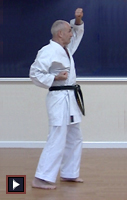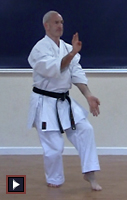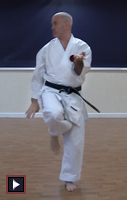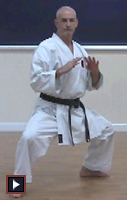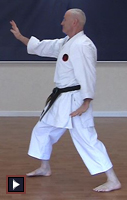The twelve Kata of Goju-Ryu Karate - Films courtesy of Goju Ryu Academy
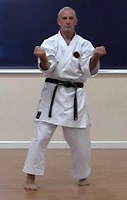
Sanseru
36 Hands
Kata: 2nd Dan
Bunkai: 2nd Dan
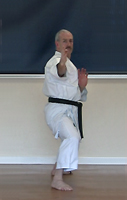
Sepai
18 hands
Kata: 3rd Dan
Bunkai: 3rd Dan
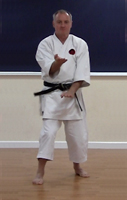
Kururunfa
Holding, striking suddenly
Kata: 4th Dan
Bunkai: 4th Dan
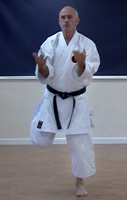
Seisan
13 Hands
Kata: 5th Dan
Bunkai: 5th Dan
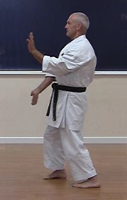
Suparinpei
108 Hands
Kata: 6th Dan
Bunkai: 7th Dan
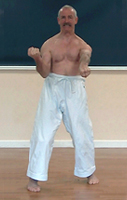
Sanchin
3 battles
Kata: 5th Kyu
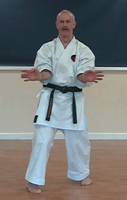
Tensho
Rotating palms
Kata: 3rd Dan
Gekisai Dai Ichi
Meaning: "To destroy" or "attack and destroy"
This kata was developed by Chojun Miyagi after 1936, and it is the first kata to be taught to beginners.
Gekisai Dai Ni.
Gekisai dai ni was also developed by Chojun Miyagi to incorporate slightly "softer" techniques, although it follows a similar pattern to that of Gekisai Dai Ichi. It involves the use of open-handed and circular techniques, and it is the second kata to be taught to beginners.
Saifa
Meaning: "To destroy and defeat"
This is usually the first advanced Goju-ryu kata the karateka (practitioner of karate) learns after gekisai dai ichi and gekisai dai ni. The centre of the kata is the sagi ashi dachi, or crane/heron stance where you stand on one foot with the toes of the raised foot lightly touching the knee of the standing leg.
Seiunchin
Meaning: "To attack, conquer and suppress"; also referred to as "to control and pull into battle"
Seiunchin involves the use of techniques to unbalance, throw and grapple with your opponent. It contains close-quarter striking, sweeps, take-downs and throws.
Shisochin
Meaning: "To destroy in four directions" or "fight in four directions"
Shisochin integrates powerful linear attacks (shotei zuki) and circular movements and blocks. It is reputed to have been the favorite kata of Chojun Miyagi.
Sanseru
Meaning: "36 Hands"
Sanseru teaches how to move around the opponent in close quarters fights, and emphasizes the destruction of the opponent's mobility by means of kanzetsu geri.
Sepai
Meaning: "18 Hands"
Sepai incorporates both the four directional movements and 45 degree angular attacks incorporating techniques for both long distance and close quarter combat.
Kururunfa
Meaning: "Holding on long and suddenly striking
This kata techniques are based on Chinese Praying Mantis style.
Seisan
Meaning: "13 Hands"
Seisan is thought to be one of the oldest katas, and similar variants of the same pattern/form are to be found in many other styles of karate.
Suparenpei
Meaning: "108 Hands"
It is the most advanced Goju-Ryu kata.
Sanchin
Meaning: "Three battles"
In the past, student karatekas were often required to spend years mastering the movements and breathing techniques of Sanchin before they were taught any other katas. The EGKA teaches the Chojun Miyagi's version of Sanchin, where the karateka goes first forward and then backwards without turning. Another version was taught by Kanryo Higaonna in which the karateka always moves forward by incorporating two 180 degrees turns.
Tensho
Meaning: "Rotating palms"
Tensho was created in 1921 as "softer sanchin" by Chojun Miyagi. It is a combination of hard dynamic tension with deep breathing and soft, flowing hand movements.

